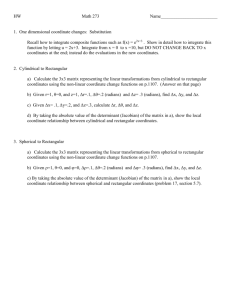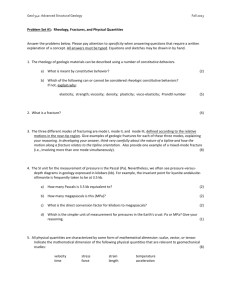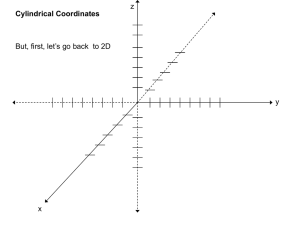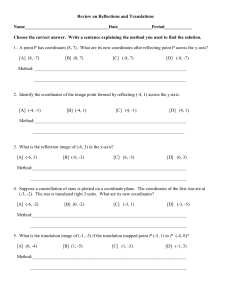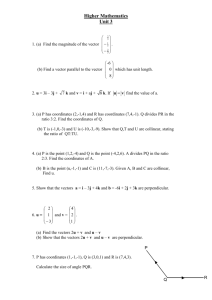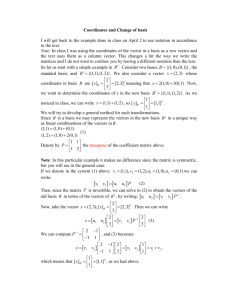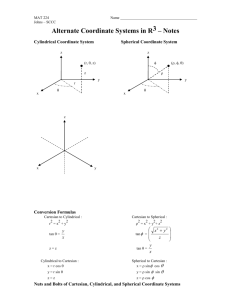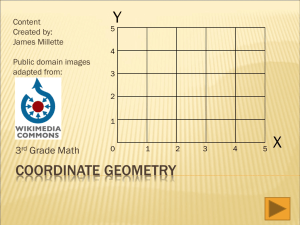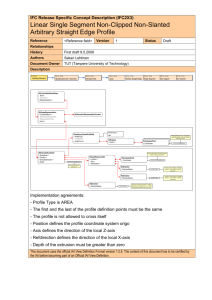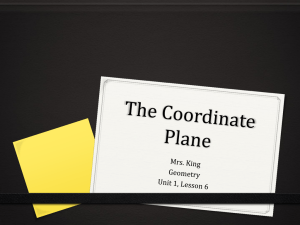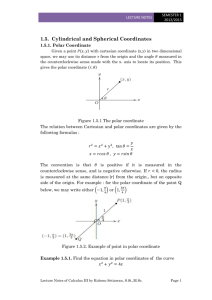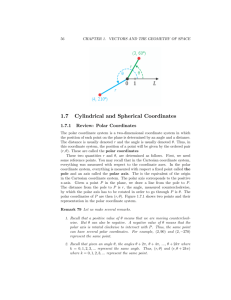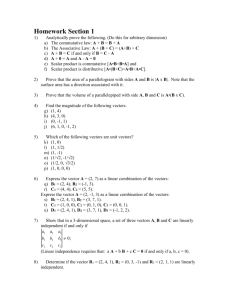Math 335-001
advertisement
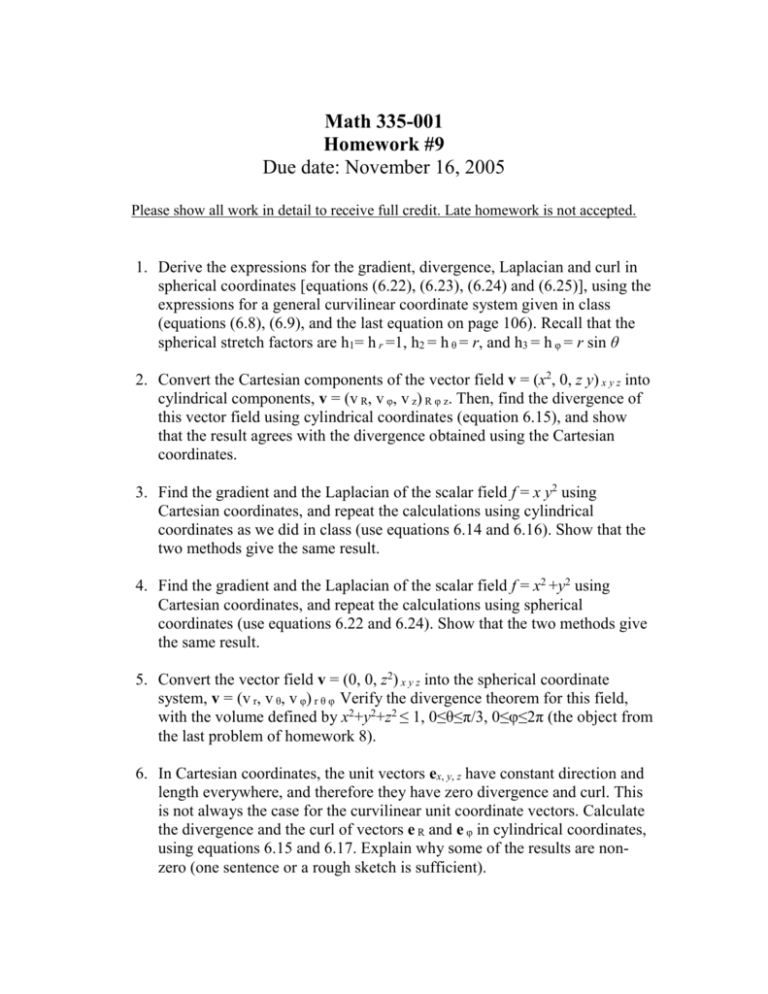
Math 335-001 Homework #9 Due date: November 16, 2005 Please show all work in detail to receive full credit. Late homework is not accepted. 1. Derive the expressions for the gradient, divergence, Laplacian and curl in spherical coordinates [equations (6.22), (6.23), (6.24) and (6.25)], using the expressions for a general curvilinear coordinate system given in class (equations (6.8), (6.9), and the last equation on page 106). Recall that the spherical stretch factors are h1= h r =1, h2 = h θ = r, and h3 = h φ = r sin θ 2. Convert the Cartesian components of the vector field v = (x2, 0, z y) x y z into cylindrical components, v = (v R, v φ, v z) R φ z. Then, find the divergence of this vector field using cylindrical coordinates (equation 6.15), and show that the result agrees with the divergence obtained using the Cartesian coordinates. 3. Find the gradient and the Laplacian of the scalar field f = x y2 using Cartesian coordinates, and repeat the calculations using cylindrical coordinates as we did in class (use equations 6.14 and 6.16). Show that the two methods give the same result. 4. Find the gradient and the Laplacian of the scalar field f = x2 +y2 using Cartesian coordinates, and repeat the calculations using spherical coordinates (use equations 6.22 and 6.24). Show that the two methods give the same result. 5. Convert the vector field v = (0, 0, z2) x y z into the spherical coordinate system, v = (v r, v θ, v φ) r θ φ Verify the divergence theorem for this field, with the volume defined by x2+y2+z2 ≤ 1, 0≤θ≤π/3, 0≤φ≤2π (the object from the last problem of homework 8). 6. In Cartesian coordinates, the unit vectors ex, y, z have constant direction and length everywhere, and therefore they have zero divergence and curl. This is not always the case for the curvilinear unit coordinate vectors. Calculate the divergence and the curl of vectors e R and e φ in cylindrical coordinates, using equations 6.15 and 6.17. Explain why some of the results are nonzero (one sentence or a rough sketch is sufficient). Note on converting vectors between different coordinate systems A vector should not depend on a coordinate system we choose to use, so v = vx ex + vy ey + vz ez = v1 e1 + v2 e2 + v3 e3 where e1, 2, 3 are the unit vectors of any curvilinear orthogonal coordinate system. We may re-write the above equation in component form as v = (vx, vy, vz) x y z = (v1, v2, v3) u1 u2 u3 where the subscripts indicate the coordinate system of the components. The vector components in brackets are found by projecting the vector onto each of the unit vectors: v x, y, z = v ∙ ex, y, z and v1, 2, 3 = v ∙ e1, 2, 3 where the relationship between the curvilinear basis vectors e1, 2, 3 and the cartesian basis vectors ex, y, z is given by ei = r ui 1 1 r r ( xe x y e y z e z ) , i =1, 2, 3 = ui hi ui hi ui For cylindrical coordinates, we have (see page 108) eR = (1, 0, 0)R φ z = (cos φ, sin φ, 0)x y z eφ = (0, 1, 0)R φ z = (-sin φ, cos φ, 0)x y z ez = (0, 0, 1)R φ z = (0, 0, 1)x y z vR = v ∙ eR vφ = v ∙ eφ vz = v ∙ ez For spherical coordinates, we have (see page 111) er = (1, 0, 0)r θ φ = (sin θ cos φ, sin θ sin φ, cos θ)x y z eθ = (0, 1, 0)r θ φ = (cos θ cos φ, cos θ sin φ, -sin θ)x y z eφ = (0, 0, 1)r θ φ = (-sin φ, cos φ, 0)x y z v r = v ∙ er v θ = v ∙ eθ v φ = v ∙ eφ
